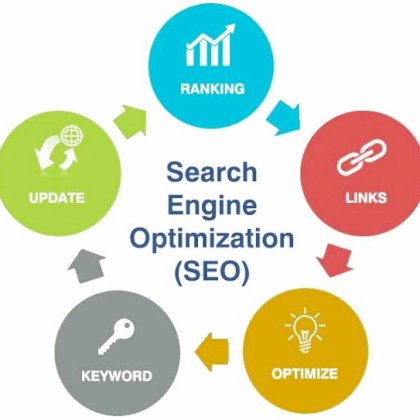Marketing Strategy Basics: Key Components and Objectives

marketing strategy Marketing strategy refers to a set of plans and actions designed to promote a product or service and achieve the desired marketing objectives. It is an essential aspect of any business as it enables companies to identify and target specific customer segments, establish brand awareness, increase customer loyalty, and ultimately, drive sales. A well-planned marketing strategy involves conducting market research, analyzing competitor's strategies, identifying target audience, developing compelling messages and advertisements, choosing appropriate marketing channels, and monitoring and evaluating the results. By implementing an effective marketing strategy, companies can position themselves competitively in the market and effectively communicate their value proposition to customers.
In today's digital era, having an effective marketing strategy has become crucial for businesses to thrive and succeed. A well-crafted marketing strategy serves as a roadmap for achieving the company's goals and objectives, while also helping to create brand awareness and generate leads. In this article, we will explore the key components and objectives of a successful marketing strategy, all while adhering to SEO best practices and incorporating valuable information for readers.
Understanding your target audience
A crucial aspect of any marketing strategy is understanding your target audience. By identifying and analyzing your ideal customer, you can tailor your marketing efforts to resonate with their needs and preferences. This involves conducting market research, leveraging customer data, and creating buyer personas to gain insights into their demographics, behaviors, and pain points. By understanding your target audience, you can effectively position your brand and deliver a personalized and relevant experience.
Setting clear objectives
Another key component of a successful marketing strategy is setting clear objectives. Your objectives should be specific, measurable, attainable, relevant, and time-bound (SMART). Whether it's increasing brand awareness, boosting website traffic, or driving conversions, your objectives will serve as a guide throughout your marketing activities. By having clearly defined objectives, you can track your progress, make data-driven decisions, and refine your strategies accordingly.
Developing a compelling brand message
A compelling brand message is vital for effectively communicating your value proposition to your target audience. Your brand message should encapsulate your unique selling proposition (USP) and highlight the benefits and solutions your products or services offer. By crafting a strong brand message, you can differentiate yourself from your competitors and establish a strong emotional connection with your target audience. Remember to incorporate relevant keywords naturally into your brand message to improve your SEO performance.
Creating engaging and relevant content
Content plays a crucial role in a successful marketing strategy. By creating high-quality and engaging content, you can attract and engage your target audience, build trust and credibility, and position your brand as an industry authority. Your content should align with your target audience's interests and needs while incorporating relevant keywords naturally. Consider using a mix of blog posts, videos, infographics, and social media content to cater to different user preferences and increase your online visibility.
Implementing effective channels and tactics
Selecting the right marketing channels and tactics is essential for reaching and engaging your target audience effectively. Whether it's search engine optimization (SEO), social media marketing, email marketing, or influencer partnerships, each channel and tactic should align with your target audience's behavior and preferences. Conducting thorough research and analyzing market trends can help you identify the most effective channels and tactics to include in your marketing strategy.
Measuring and optimizing your marketing efforts
Measuring and optimizing your marketing efforts is crucial for ensuring continuous improvement and achieving your objectives. By analyzing key performance indicators (KPIs) such as website traffic, conversion rates, and engagement metrics, you can identify areas of improvement and make data-driven decisions. Regularly monitoring and tracking your marketing activities will enable you to optimize your strategies, allocate resources effectively, and drive better results.
By incorporating these key components and objectives into your marketing strategy, you can create a solid foundation for success. Remember to always stay updated with the latest SEO trends and algorithm changes to ensure your content remains visible and optimized. By adopting a professional and authoritative writing style inspired by Neil Patel, you can deliver valuable insights and information to your readers while maximizing your search engine visibility.
Developing an Effective Marketing Strategy: A Step-by-Step Guide
In today's digital age, having a well-defined marketing strategy is essential for the success of any business. Without a clear roadmap, it's easy to get lost in the sea of competitors and fail to reach your target audience. In this comprehensive guide, we will walk you through the step-by-step process of developing an effective marketing strategy that will skyrocket your business growth.
Step 1: Define Your Goals
The first and most crucial step in developing your marketing strategy is to define your goals. What do you want to achieve with your marketing efforts? Are you looking to increase brand awareness, generate leads, or boost sales? Clearly defining your goals will help you align your marketing activities and measure their success.
One effective approach is to use the SMART goal framework. Your goals should be specific, measurable, achievable, relevant, and time-bound. For example, instead of saying "increase sales," a SMART goal would be "increase sales by 10% within the next six months through targeted online advertising campaigns."
Step 2: Know Your Target Audience
To create an effective marketing strategy, you need to have a deep understanding of your target audience. Who are they? What are their needs, preferences, and pain points? Conduct market research, analyze customer data, and create buyer personas to gain valuable insights into your target audience.
Once you have a clear picture of your ideal customer, you can tailor your messaging and choose the right marketing channels to reach them effectively. Remember, the key is to deliver the right message to the right people at the right time.
Step 3: Conduct a Competitor Analysis
Understanding your competition is crucial in developing a successful marketing strategy. Identify your competitors and analyze their marketing tactics. What marketing channels are they using? How are they positioning their products or services? Evaluate their strengths and weaknesses to identify opportunities for differentiation.
By knowing what your competitors are doing, you can develop unique selling propositions (USPs) that set your business apart. Highlight the value and benefits you offer that your competitors do not, and use this information to guide your marketing efforts.
Step 4: Choose the Right Marketing Channels
Once you have a clear understanding of your goals, target audience, and competitors, it's time to choose the right marketing channels. Consider where your target audience spends their time and what channels will allow you to effectively reach them.
Some common marketing channels include search engine optimization (SEO), social media marketing, email marketing, content marketing, and paid advertising. Each channel has its strengths and weaknesses, so it's important to choose the ones that align with your goals and target audience.
Step 5: Develop Compelling Content
Content is the backbone of any successful marketing strategy. It's what attracts, engages, and converts your target audience into customers. Develop high-quality, valuable content that addresses your audience's pain points and provides solutions.
Utilize your target keywords naturally throughout your content to improve search engine optimization. Remember, search engines prioritize quality and relevance. So, focus on creating content that adds value and satisfies the user's search intent.
Step 6: Implement and Measure
Once you have developed your marketing strategy, it's time to implement it and start measuring the results. Regularly monitor your key performance indicators (KPIs), such as website traffic, conversion rates, and social media engagement, to evaluate the effectiveness of your strategy.
Make adjustments as needed based on the data and insights you gather. Marketing is an ongoing process, so be flexible and adapt your strategy as market conditions and customer preferences change.
By following these steps and adopting a results-driven approach, you can develop an effective marketing strategy that will propel your business forward. Remember, consistency and persistence are key. Rome wasn't built in a day, and neither will your marketing success. Stay focused, stay dedicated, and you will see the results you desire.
Target Market Analysis: Identifying and Understanding Your Audience
When it comes to successful marketing, understanding your target audience is crucial. Without a clear understanding of who your customers are, their needs, and their preferences, your marketing efforts can fall flat. That's why conducting a target market analysis is an essential step in developing effective marketing strategies.
So, what exactly is a target market analysis? It's a process that involves gathering data and insights about your potential customers to identify their characteristics, behaviors, and motivations. This information helps you create targeted marketing campaigns that resonate with your audience and drive better results.
One of the first steps in a target market analysis is defining your target market. Who are the people you want to reach with your products or services? This can be based on factors such as age, gender, location, income level, or interests. By narrowing down your audience, you can tailor your marketing messages to meet their specific needs and interests.
Next, it's important to gather information about your target market. This can be done through surveys, interviews, or analyzing data from sources like social media or customer databases. Look for patterns and trends among your target audience, such as their preferences, shopping habits, or challenges they face. This information can help you better understand their motivations and tailor your marketing efforts accordingly.
Once you have a clear picture of your target market, it's time to analyze the competition. Who else is targeting the same audience? What are their strengths and weaknesses? Understanding your competitors can help you identify gaps in the market and position your brand as a unique and valuable solution.
Another crucial aspect of a target market analysis is understanding the pain points of your audience. What challenges or problems do they face that your product or service can solve? By addressing these pain points in your marketing messages, you can provide value and position yourself as a trusted solution provider.
Finally, it's important to continuously monitor and evaluate your target market. Markets evolve, trends change, and customer preferences shift. Regularly reassessing your target market analysis ensures that your marketing strategies remain relevant and effective in reaching your audience.
| Benefits of Target Market Analysis |
|---|
| 1. Improved Marketing ROI: By understanding your target audience, you can focus your marketing efforts on the channels and messages that are most likely to resonate with them, leading to higher returns on investment. |
| 2. Enhanced Customer Engagement: Tailoring your marketing messages to your target market's needs and preferences helps to establish a connection with your audience, increasing engagement and loyalty. |
| 3. Competitive Advantage: A thorough target market analysis allows you to identify gaps in the market and position your brand as a unique and valuable solution, giving you a competitive edge over your competitors. |
| 4. Better Product Development: Understanding your audience helps you identify their pain points and develop products or services that meet their needs, leading to higher customer satisfaction and loyalty. |
| 5. Effective Communication: By speaking directly to your target audience's interests and motivations, you can create compelling and persuasive marketing messages that drive action and conversions. |
In conclusion, conducting a target market analysis is essential for any business looking to maximize their marketing efforts. By understanding your audience, their needs, and preferences, you can create targeted campaigns that resonate and drive better results. Take the time to gather insights, analyze your competition, and address your audience's pain points. With a well-executed target market analysis, you can position your brand for success in today's competitive landscape.
Competitive Analysis: Assessing Your Competitors and Differentiating Yourself
In today's competitive business landscape, it is crucial for companies to understand and analyze their competitors. By conducting a comprehensive competitive analysis, you can gain valuable insights into your competition and identify areas where your business can differentiate itself. This article will guide you through the process of assessing your competitors and finding unique ways to stand out in the market.
When conducting a competitive analysis, the first step is to identify your key competitors. Look for companies that operate in the same industry or offer similar products/services. Once you have identified your competitors, it is important to gather information about them. This can include analyzing their website, social media presence, marketing strategies, products/services offered, pricing, and customer reviews.
One effective way to gather this information is by using online tools and resources. There are various tools available that can provide insights on your competitors' organic search rankings, backlink profiles, and keyword strategies. By analyzing this data, you can identify potential gaps in the market or areas where your competitors are excelling.
- Evaluate their website: Take a close look at your competitors' websites and analyze their design, layout, and user experience. Look for areas where their website excels and areas where it falls short. Use this information to improve your own website and provide a better online experience for your customers.
- Study their marketing strategies: Analyze your competitors' marketing strategies to understand how they are promoting their products/services. Look at the channels they are using, such as social media, email marketing, or content marketing. Identify any unique strategies they are implementing and consider if they align with your own marketing goals.
- Analyze their products/services: Take the time to study your competitors' products or services in depth. Understand their features, pricing, and unique selling points. Look for opportunities to differentiate your offerings and provide additional value to your customers.
- Monitor their online presence: Keep an eye on your competitors' social media accounts, blogs, and customer reviews. Pay attention to what their customers are saying, both positive and negative. This can provide valuable insights into areas where your competitors are succeeding and areas where they are falling short.
Once you have gathered all the necessary information, it's time to differentiate yourself from your competitors. Consider the strengths and weaknesses of your competitors and find unique ways to stand out in the market. This could involve offering a superior product/service, providing exceptional customer service, or implementing innovative marketing strategies.
Remember, effective differentiation requires a deep understanding of your target market and their needs. By focusing on providing value and addressing customer pain points, you can position yourself as the preferred choice among your competitors.
In conclusion, conducting a competitive analysis is essential for businesses looking to succeed in today's competitive landscape. By understanding your competitors and finding ways to differentiate yourself, you can position your business for long-term success. So, take the time to analyze your competition, identify areas for improvement, and implement strategies that set you apart from the crowd.
Creating a Winning Value Proposition: Unique Selling Points and Benefits
A strong value proposition is essential for any business looking to stand out in today's highly competitive market. It is the foundation upon which successful marketing campaigns are built. In this article, we will explore the concept of value proposition, its importance, and how you can create a winning one for your business.
Understanding Value Proposition
Value proposition is the unique combination of features, benefits, and advantages that sets your product or service apart from the competition. It is the reason why customers choose you over others. To create an effective value proposition, you must first understand your target audience and their needs.
Identify the pain points and challenges your potential customers face. What problems does your product or service solve? How does it make their lives easier? By answering these questions, you can craft a value proposition that resonates with your target audience.
The Power of Unique Selling Points
Your unique selling points (USPs) are the specific features or characteristics that differentiate your product or service from others in the market. These USPs should be highlighted in your value proposition, as they give you a competitive edge.
When determining your USPs, consider what makes your offering special or better than alternatives. It could be a superior quality, a lower price, faster delivery, excellent customer service, or even a combination of these factors. Focus on what sets you apart and communicate it clearly in your marketing messages.
Benefits That Matter to Your Customers
Benefits are the positive outcomes or results that customers gain from using your product or service. While features describe what your offering does, benefits explain how it solves their problems or improves their lives.
When identifying the benefits of your product or service, put yourself in your customers' shoes. Think about what matters most to them. Is it saving time, saving money, increasing productivity, or enhancing their well-being? Tailor your value proposition to highlight these benefits and show customers how choosing you can positively impact their lives.
Creating a Compelling Value Proposition
Now that you understand the importance of value proposition, unique selling points, and benefits, let's dive into how you can create a compelling one for your business:
| Step | Description |
|---|---|
| 1 | Identify your target audience and their needs |
| 2 | Highlight your unique selling points |
| 3 | Define the benefits your customers will experience |
| 4 | Craft a concise and compelling value proposition statement |
| 5 | Test your value proposition with your target audience |
Remember to use strong and persuasive language throughout your value proposition. Emphasize how your offering solves their problems, saves them money, or makes their lives better. Use powerful words that evoke emotions and create a sense of urgency or desire.
In conclusion, creating a winning value proposition requires a deep understanding of your target audience, their needs, and what sets you apart from your competitors. By highlighting your unique selling points and demonstrating the benefits customers can expect, you can craft a compelling value proposition that captures their attention and drives conversions.
For more information on value propositions, you can visit (source).
Choosing the Right Marketing Channels: Online, Offline, and Integrated Approaches
In today's digital age, businesses have numerous marketing channels at their disposal. From traditional offline methods to the ever-evolving online platforms, choosing the right marketing channels is crucial for success. However, the abundance of options can often be overwhelming. In this article, we will explore the pros and cons of online, offline, and integrated marketing approaches, helping you make an informed decision for your business.
Online Marketing Channels
Online marketing channels have revolutionized the way businesses reach their target audience. With a wide array of options, it is essential to understand each platform's characteristics and potential benefits:
1. Search Engine Optimization (SEO): Used to improve your website's visibility and ranking on search engine result pages, SEO is a long-term investment that can drive organic traffic to your site. By optimizing your content and website structure, you can attract qualified leads and increase brand visibility.
2. Pay Per Click (PPC) Advertising: PPC advertising allows businesses to display targeted ads on search engine results or social media platforms. By bidding on keywords, you can ensure your ads are shown to relevant users. This method provides instant visibility and control over your marketing budget.
3. Social Media Marketing: With billions of users, social media platforms offer immense potential for businesses to connect with their target audience. From creating engaging content to running targeted ad campaigns, social media marketing allows you to build brand awareness, generate leads, and drive conversions.
Offline Marketing Channels
Traditional offline marketing channels may seem outdated in the digital age, but they still hold value for certain businesses:
1. Print Advertising: From newspaper ads to brochures and billboards, print advertising allows companies to target specific demographics and reach local audiences. While it may lack the immediacy of online channels, print ads can make a lasting impression on readers.
2. Television and Radio Advertising: Television and radio advertising reach a wide audience and offer the ability to engage viewers and listeners through visuals, sound, and storytelling. This medium is particularly effective for businesses with broader target markets or when creating brand awareness.
Integrated Marketing Approach
As digital and traditional marketing channels continue to coexist, many businesses opt for an integrated marketing approach that combines the strengths of both online and offline methods:
1. Cross-Channel Promotion: By leveraging multiple channels, businesses can enhance their brand visibility and reach a wider audience. For example, promoting your website or social media handles through offline channels can drive online engagement and traffic.
2. Consistent Messaging: Maintaining consistent messaging across different channels is crucial for brand recognition and customer trust. Ensure that your brand voice and values are consistent in online and offline content.
3. Tracking and Analytics: With digital marketing channels, businesses can utilize data and analytics tools to measure the effectiveness of their campaigns. Tracking key metrics allows companies to refine their strategies and allocate resources more efficiently.
Choosing the right marketing channels depends on your target audience, industry, budget, and marketing goals. It is essential to analyze each channel's potential benefits and drawbacks and find the right balance between online, offline, and integrated approaches. By leveraging the strengths of different marketing channels, businesses can maximize their reach and drive meaningful results.
Measuring Success: Key Metrics and KPIs for Evaluating Marketing Strategy
In today's competitive business landscape, it is crucial for companies to have a well-defined marketing strategy that drives growth and generates desired outcomes. However, having a strategy in place is not enough. In order to truly evaluate the effectiveness of your marketing efforts, you need to measure success using key metrics and KPIs.
What are Key Metrics and KPIs?
Key metrics and KPIs, which stand for Key Performance Indicators, are quantifiable measures that help businesses track and evaluate their performance in achieving specific objectives. These metrics provide valuable insights into the success or failure of various marketing initiatives and help companies make data-driven decisions for future strategies.
Identifying the Right Metrics for Your Marketing Strategy
The first step in measuring marketing success is to identify the right metrics that align with your marketing goals and objectives. Every marketing campaign or initiative will have different objectives, so it is important to choose metrics that accurately reflect those goals.
Some common metrics to consider include:
- Conversion Rate: This metric measures the percentage of website visitors who take a desired action, such as making a purchase or signing up for a newsletter.
- Customer Acquisition Cost (CAC): CAC helps you understand how much it costs to acquire a new customer. This metric is crucial in assessing the overall profitability of your marketing efforts.
- Customer Lifetime Value (CLV): CLV measures the total value a customer brings to your business over their lifetime. This metric helps in understanding the long-term profitability of your customer relationships.
- Return on Investment (ROI): ROI measures the profitability of your marketing campaigns by comparing the revenue generated to the cost of running those campaigns.
Setting SMART Goals for Measurement
To effectively measure marketing success, it is important to set SMART goals. SMART stands for Specific, Measurable, Achievable, Relevant, and Time-bound. Setting SMART goals ensures that your metrics and KPIs are aligned with your overall marketing objectives and provide a clear path for evaluation.
Utilizing Tools and Technology for Tracking and Analytics
In order to measure success accurately, it is crucial to leverage the power of tools and technology. There are various analytics platforms available that can provide detailed insights into your marketing data, making it easier to track and analyze key metrics and KPIs.
Some popular analytics tools include Google Analytics, HubSpot, and Kissmetrics. These tools offer a wide range of features for measuring and evaluating the success of your marketing campaigns.
Continuous Monitoring and Optimization
Measuring marketing success is an ongoing process. It is important to continuously monitor and optimize your marketing efforts based on the insights gathered from your key metrics and KPIs. By regularly reviewing and analyzing your data, you can identify areas that need improvement and make necessary adjustments to your marketing strategy.
Conclusion
Measuring success is a critical aspect of any marketing strategy. By identifying the right key metrics and KPIs, setting SMART goals, leveraging tools and technology, and continuously monitoring and optimizing, you can effectively evaluate the success of your marketing efforts and make data-driven decisions for future strategies.
Adapting and Evolving: Continuous Improvement in Marketing Strategy
Marketing strategies play a crucial role in the success of any business. In today's fast-paced and ever-changing digital landscape, it is essential for marketers to adapt and evolve their strategies continuously. Continuous improvement in marketing strategy is not just a trend; it is a necessity for keeping up with the competition and staying relevant to the target audience.
One of the key aspects of continuous improvement in marketing strategy is staying updated with the latest trends and changes in the industry. The digital world is constantly evolving, and new technologies, platforms, and consumer behaviors emerge regularly. Marketers need to stay informed and embrace these changes to ensure their strategies align with the current market demands.
Another important factor in continuous improvement is gathering and analyzing data. Data-driven decision making is a fundamental principle of modern marketing. Through analytics tools and platforms, marketers can track and measure the performance of their strategies, identify areas that need improvement, and make data-backed adjustments. This iterative process allows for continuous improvement and optimization of marketing efforts.
Additionally, effective communication and collaboration within the marketing team are vital for continuous improvement. Marketers should regularly communicate and share insights, experiences, and best practices with their colleagues. Collaboration not only fosters a culture of learning and growth but also provides different perspectives and ideas that can lead to innovation and improved strategies.
A continuous improvement mindset also involves ongoing experimentation and testing. Marketing is not a one-size-fits-all approach, and what works for one business may not necessarily work for another. By continually testing and experimenting with different strategies, channels, and messaging, marketers can identify what resonates best with their target audience and adjust their approach accordingly.
Furthermore, keeping an eye on the competition is essential for continuous improvement. By monitoring competitors' strategies and tactics, marketers can gain valuable insights into what is working in the market and identify potential gaps or opportunities. This competitive intelligence allows for informed decision making and helps stay ahead of the curve.
In conclusion, continuous improvement in marketing strategy is crucial for businesses to stay competitive and relevant in the ever-evolving digital landscape. By staying updated with industry trends, analyzing data, fostering collaboration, experimenting, and monitoring competition, marketers can adapt and evolve their strategies for optimal performance. Embracing the mindset of continuous improvement is not just a choice; it is a necessity in today's dynamic marketing environment.
For more information on effective marketing strategies and continuous improvement, feel free to consult with our team of experts. We are here to help you stay ahead in this ever-changing world of marketing.
Frequently Asked Questions
A marketing strategy refers to a plan of action designed to promote and sell a product or service to a target market. It includes identifying target customers, setting objectives, determining marketing tactics, and evaluating results to achieve business goals.
A marketing strategy helps businesses to effectively reach their target audience, differentiate themselves from competitors, and achieve their marketing and sales objectives. It provides a roadmap for decision-making, resource allocation, and measuring success.
To create a marketing strategy, you should start by conducting market research to understand your target market and competitors. Define your goals, identify your unique selling proposition, choose your target audience, select marketing channels, develop messaging and creative assets, and create a plan for implementation and measurement.
The key components of a marketing strategy include market research, target market identification, competitive analysis, positioning and differentiation, marketing mix (product, price, place, promotion), branding, messaging, creative assets, budget allocation, implementation plan, and performance measurement.
Different types of marketing strategies include market penetration, market development, product development, diversification, segmentation, targeting, positioning, relationship marketing, content marketing, digital marketing, social media marketing, influencer marketing, and experiential marketing.
It is recommended to review and update your marketing strategy on an ongoing basis. While the frequency may vary depending on your business and industry, regular monitoring of market trends, consumer behavior, and performance metrics can help identify opportunities to optimize and adapt your strategy.
You can measure the effectiveness of your marketing strategy by tracking key performance indicators (KPIs) such as sales revenue, customer acquisition cost, customer lifetime value, website traffic, conversion rates, social media engagement, brand awareness, and customer satisfaction. Analyzing these metrics can provide insights into the impact and efficiency of your marketing efforts.
If your marketing strategy is not achieving desired results, it is important to analyze the reasons behind it. Review your market research, competitive landscape, target audience, messaging, marketing channels, and implementation plan. Identify areas for improvement, consider making adjustments to your strategy, and test new approaches to find what works best for your business.
Hiring a marketing agency can be beneficial if you have limited internal resources, need expertise in specific areas, or desire a fresh perspective. A marketing agency can provide professional insights, industry knowledge, strategic planning, creative services, and marketing execution support to help you achieve your marketing goals.
You can find more resources on marketing strategy through online research, industry publications, marketing textbooks, business blogs, marketing associations, professional networking events, webinars, podcasts, and online courses. It is important to stay updated on the latest trends, best practices and industry insights to continually enhance your marketing strategy.
 English
English
 Turkish
Turkish 





















